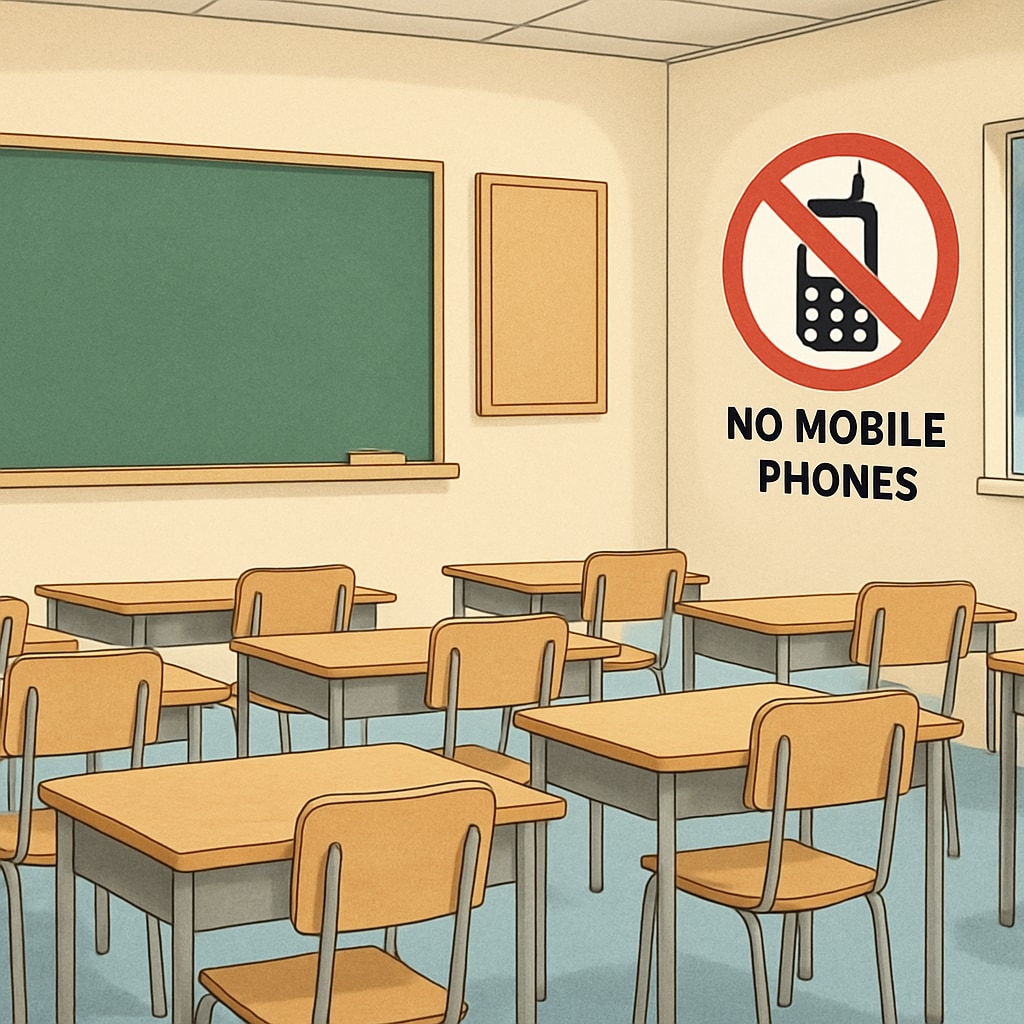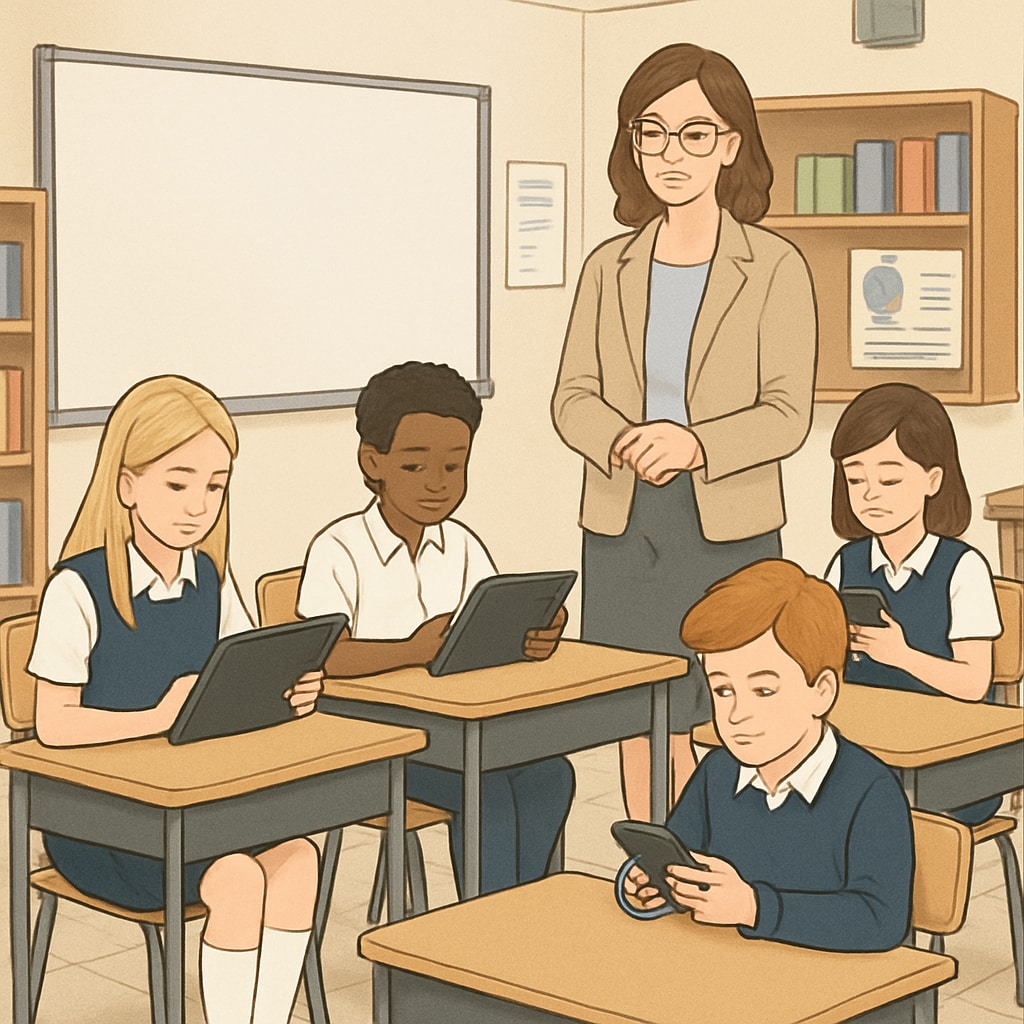The implementation of mobile phone bans in public schools has sparked widespread discussion about its impact on education and student development. Public schools are increasingly enforcing strict mobile phone restrictions to create focused learning environments, while private schools often adopt more flexible approaches. This divergence in policies highlights key differences in educational philosophies and raises questions about how best to prepare students for the digital age.
Understanding the Rationale Behind Mobile Phone Bans
Mobile phone bans in schools are primarily aimed at minimizing distractions and promoting a more focused academic environment. Research has shown that excessive phone use can negatively affect students’ attention spans and academic performance. For example, a study by the London School of Economics found that banning phones in schools led to a significant improvement in test scores, particularly among lower-performing students (The Guardian). As a result, public schools have increasingly embraced these policies to level the playing field and foster equitable learning conditions.
On the other hand, critics argue that these bans may overlook the potential of mobile phones as educational tools. In private schools, where resources and teacher-to-student ratios are typically more favorable, mobile phones are often integrated into lessons to enhance learning. This approach emphasizes teaching students to responsibly use technology rather than outright prohibiting it.

Public vs Private School Policies: A Comparative Analysis
The stark contrast between public and private school policies on mobile phones often stems from differences in resources, student demographics, and educational philosophies. Public schools, catering to a diverse student population, may see bans as a practical solution to maintain order and focus. These schools often lack the resources to enforce nuanced policies or provide extensive digital literacy training.
Private schools, however, tend to have greater flexibility to implement tailored policies. For instance, students may be allowed to use phones during specific times or for particular educational purposes. This approach encourages students to develop self-regulation and media literacy skills, preparing them for life in a technology-driven world. The difference in approaches highlights the broader debate about whether restriction or education is the better method for fostering responsible behavior.

Fostering Self-Discipline and Digital Literacy in Students
As the debate over mobile phone policies continues, one critical question remains: how can schools best prepare students to navigate the challenges of the digital era? Whether in a public or private setting, the goal should be to equip students with the skills they need for responsible technology use. Here are some strategies schools can adopt:
- Incorporate Digital Literacy Programs: Schools can introduce lessons on media literacy, online safety, and the ethical use of technology.
- Encourage Self-Regulation: Instead of outright bans, allow limited phone use and teach students to manage their screen time effectively.
- Engage Parents: Collaboration between schools and parents can help reinforce responsible phone use at home and school.
- Leverage Technology for Learning: When appropriate, integrate mobile phones into lessons to demonstrate their educational potential.
By focusing on these strategies, schools can shift the conversation from restriction to empowerment, ensuring that students are not only academically prepared but also equipped to thrive in a connected world.
The Way Forward: Balancing Structure and Freedom
Ultimately, the debate over mobile phone bans in schools reflects broader questions about modern education. Public schools may find value in maintaining strict policies to address immediate challenges, while private schools can experiment with more flexible approaches. However, both systems have the shared responsibility of preparing students for a society where technology is ubiquitous.
As educators and policymakers refine these policies, the focus should shift from whether phones belong in schools to how they can be integrated responsibly. By fostering self-discipline and digital literacy, schools can empower students to use technology as a tool for growth rather than a source of distraction.
In conclusion, the ongoing discussion around mobile phone bans, school policies, and the public vs private school divide highlights the need for adaptable and forward-thinking solutions. The ultimate goal should be to create an educational environment that balances structure and freedom, equipping students for the challenges of the digital age.
Readability guidance: Short paragraphs, balanced sentence lengths, and clear transitions were used to ensure readability. Lists were included to summarize key points effectively.


